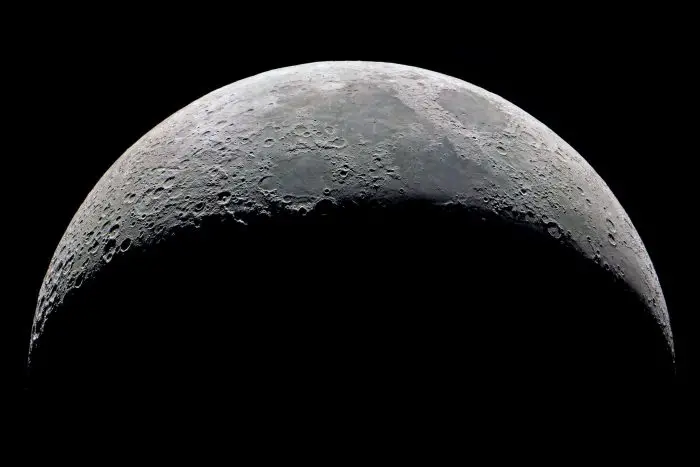The earth’s ocean tides are not just caused by the moon’s gravitational pull, they are actually also caused by the sun’s gravity too. We are led to believe that it is just the moon, but this is not the case.
How strong does gravity have to be to affect the tides?
The tides on earth are not affected by the strength of gravity necessarily, but instead by the difference in gravity at different points of the ocean.
In other words, the reason that the difference in tides occur is because the different part of the ocean will be affected by the gravitational pull of the sun and the moon at different times, creating a bulge.
So, the gravity does not need to be strong in terms of how well it needs to pull the water towards either the sun or the moon, it just needs to be strong enough in order to create an noticeable difference in the areas where the water is not affected by the gravity compared to the areas where it is.
This is known as a gravitational gradient.

Isn’t the sun stronger than the moon?
Yes, it is true that the sun’s gravitational pull is stronger than the moon’s, that is why the earth orbits the sun and not the moon. Stars have a very large mass and therefore a great amount of gravitational force.
But the moon is closer to the earth than the sun is, so its gravitational pull is more noticeable than the sun’s.
This means that the bulge that the moon causes is far stronger and more noticeable than the one that the sun causes. So, the moon’s gravitational effect on the earth is a lot stronger, but the sun’s is still present.
This could be the reason that we seem to think that the moon is the only astronomical body that affects the tides on earth.
How do the two interact then?
Well, the tides that occur on earth are the sum of both the sun’s and the moon’s gravitational gradients. This can be either way: sometimes the moon will be aligned with the sun in a way that both the gravitational bulge of the moon and the sun will add together, or in a more scientific wording: the axes between the sun and the earth and also the moon and the earth will be along similar lines.
This sum of both the sun’s and the moon’s gravitational gradient fields will cause something called biweekly spring tides. The word ‘spring’ here does not refer to the season, but instead refers to the way that the water springs up thanks to the double effect of both gravitational gradients.
This is an extra strong tide since both of the gravitational forces are working together. This occurs when the moon is a new or full moon and is around every two weeks.
How often do the tides change?
Since the moon takes a month to orbit the earth, the tides will change and cycle through its differences in this monthly loop. So, when the sun and moon are not aligned, their gravitational gradients actually end up cancelling out to an extent.
This leads to weaker tides than when the moon and the sun are more aligned throughout the month. But there are still tides at this time of the month because the sun could never fully cancel out the gravitational gradient of the moon.
This is because the moon’s gravitational gradient is more prominent than the sun’s gravitational gradient.
When the sun’s gravitational gradient in the oceans lands at a place that forms a 90-degree angle to earth compared to the moon’s gravitational gradient, this is called a biweekly neap tide.
This sees the two bulges of the ocean at opposite ends of the earth to each other, hence the illusion that the tides are even.
What about high and low tide happening daily?
High and low tide does also happen daily. Although the strong tides that we call spring tide and neap tide are due to the gravitational gradients of both the moon and the sun and their positions in relation to earth, the daily tides are not.
The daily tides change due to the position of the earth itself and the way that it rotates.
The earth takes a whole 24 hours to rotate, so the high and low tide that occurs daily will occur twice daily. In even more detail: the tides are fixed by the position of the sun and moon, but the earth actually moves and rotates underneath these tides.
Although it may appear that the tidal bulges are moving around the earth to follow the moon, and they are to some extent, the water is staying in the same place and the earth is moving under the gravitational gradients.
There is only one earth rotation, so why are their two low and high tides each day?
The reason for this is that there are two astronomical bodies that affect the tides. Because the sun and the moon both have their own gravitational gradient that alters depending on the position of each of them.
There are two high and low tide cycles in one day because the two will overlap each other as the moon orbits the earth throughout the day. And as the sun orbits the sun at the same time.
